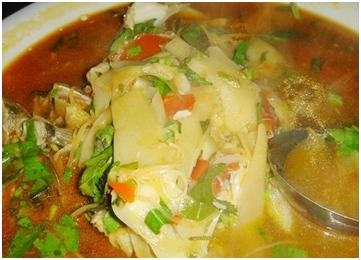代寫(xiě)CSCI-GA、代做Java編程語(yǔ)言
時(shí)間:2024-05-15 來(lái)源: 作者: 我要糾錯(cuò)
New York University
Computer Science Department
Courant Institute of Mathematical Sciences
Course Title: Data Communications & Networks Course Number: CSCI-GA.2662-001
Assignment 8: Final Project
I. Due
Friday May 14, 2024 by 11:59 pm ET.
II. Objectives
Software-defined networking (SDN) is a recent paradigm for running networks. As
per the networking layer topics covered in the course, the network is divided into
the control and data planes. The control plane provides a set of protocols and
configurations that set up the forwarding elements (hosts, switches, and routers) so
that they can forward packets. This includes, for example, ARP resolution, DNS,
DHCP, the Spanning Tree Protocol, MAC learning, NAT and access control
configuration, as well as all of the routing protocols. Usually, switches and routers
have to run all of these protocols, detect topology changes, issue heartbeats, manage
caches, timeouts, etc. Meanwhile, in many cases network administrators achieve
desired goals with the network indirectly, by tweaking parameters in the routing
protocols like link weights and local BGP preference. While the data plane is nicely
organized in the familiar layered scheme, the aggregate structure of the control
plane is a lot less clean.
SDN is a radical departure from this organization. The main idea is a separation of
the control plane from the forwarding elements. SDN switches and routers do not
run control plane protocols and mostly only forward packets based on matching of
packet predicates to a set of forwarding rules. They export a simple API to
configure these rules, as well as some feedback about current and past packets. An
accepted standard for this API is the OpenFlow protocol, which has been
implemented by dozens of switch vendors and has fostered a rich software
ecosystem. The intelligence of the control plane is (logically) centralized in a
network controller. The controller decides which rules to install based on its
configuration, and on a global view of the network topology and flows.
In this project, you will implement the logic in such a controller to manage the
following:
1. A layer-3 routing application that installs rules in SDN switches to forward
traffic to hosts using the shortest, valid path through the network. Your
application logic will manage the efficient switching of packets among hosts in
a large LAN with multiple switches and potential loops. You will write the code
for a SDN controller application that will compute and install shortest path
routes among all the hosts in your network. SDN as described is suitable for
networks under a single administrative domain (e.g., the network in a single
AS), but there are ongoing research projects to use its flexibility across
domains, integrating with and perhaps even replacing BGP.
2. A distributed load balancer application that redirect new TCP connections to
hosts in a round-robin order.
As always, the NYU and class policy about plagiarism must be followed in this
project. If you use ANY code in your project that is not of your own creation,
then you MUST attribute that code to the author, even if you modify it (ANY
modification).
III. References
1. Slides and handouts posted on the course Web site
2. Textbook chapters as applicable
3. Mininet network emulator documentation (http://mininet.org/)
4. Openflow documentation (https://www.opennetworking.org/sdn-resources/onfspecifications/openflow)
5. Open vSwitch switch software documentation (http://openvswitch.org)
6. Floodlight Java-based SDN controller documentation
(https://floodlight.atlassian.net/wiki/spaces/floodlightcontroller/overview)
7. If you have additional questions about SDN, OpenFlow, or Floodlight you may
want to consult: openflow-switch-v1.5.1.pdf (opennetworking.org) (sections 2, 3,
and 5.1 - 5.4 are likely to be the most useful), and Floodlight-plus Javadoc
8. Additional readings:
Software Defined Networking Concepts
The Road to SDN: An Intellectual History of Programmable Networks
SDN Reading List
IV. Software Required
1. Microsoft Word
2. Win Zip as necessary
3. Oracle VirtualBox
4. Virtual Box Image with all necessary software provided
5. Java Programming language, Eclipse, and other development tools installed in
Virtual Box Image provided
6. Additional code for Part 4
V. Assignment
This is a final take-home project that can be completed individually or as a team
(only two students per team).
1. Background:
You will run the code for this project in an emulated network inside of a single
Linux VM. You will use the Mininet network emulator, which is designed to
emulate arbitrary topologies of emulated OpenFlow switches and Linux hosts.
It uses container-based virtualization for very light-weight emulated nodes. The
switches in your network run the open source Open vSwitch switch software,
which implements the Openflow protocol. The switches connect to an
Openflow network controller, and you will use Floodlight, a relatively mature
Java-based controller. We will use OpenFlow version 1.0 for this project. Your
SDN applications will be written in Java and run atop the Floodlight OpenFlow
controller. You will use Mininet to emulate a variety of network topologies
consisting of OpenFlow switches and hosts.
Code you run on Mininet is ready to run with no changes in real networks.
2. Environment Setup:
a. Install Oracle VirtualBox as necessary.
b. Download the Virtual Box Image with all necessary software provided. It is
a .ova image that will enable you to run the necessary software on your
computer using the latest version of Oracle VirtualBox. To install the .ova
file go to File and Import Appliance on VirtualBox. This VM uses “mininet”
as username and password.
c. To ssh into the VM from your host computer, log in first using the GUI,
open a terminal, and type ifconfig. This will show you the IP addresses of
the VM. You will be able to connect to one of them from your host computer
via ssh. The VM also has Eclipse installed, which you can use inside the
VirtualBox graphical console or remotely via X. Once you have ssh’d into
the VM, you can go through the following steps to run your control
applications.
d. Optional (see acknowledgement in item 8 below):
Refactor edu.brown.cs.sdn.apps.sps to edu.nyu.cs.sdn.apps.sps
e. Compile Floodlight and your applications:
$ cd ~/project3/
$ ant
This will produce a jar file FloodlightWithApps.jar that includes the
compiled code for Floodlight and your SDN applications.
f. Start Floodlight and your SDN applications:
$ java -jar FloodlightWithApps.jar -cf l3routing.prop
The above command will start Floodlight and only your layer-3 routing
application. The .prop file configures your application.
Note: For future reference when working on part 4, you can start both your
layer-3 routing and load balancer applications by using
loadbalancer.prop for the -cf (configuration file) argument. The
loadbalancer application code is provided separately.
You should always start Floodlight and your SDN applications
before starting Mininet. Also, we recommend that you restart Floodlight
and your SDN applications whenever you restart Mininet.
Note: In the VirtualBox image, it is possible that the system will start an
openvswitch-controller process by default, which means your
Floodlight controller will not be able to bind to port 6633. To prevent it
from starting the next time you boot up, do:
$ sudo update-rc.d -f openvswitch-controller remove
When Floodlight starts, you should see output like the following:
23:18:45.874 INFO [n.f.c.m.FloodlightModuleLoader:main] Loading modules from file shortestPathSwitching.prop
23:18:46.277 INFO [n.f.c.i.Controller:main] Controller role set to MASTER
23:18:46.285 INFO [n.f.c.i.Controller:main] Flush switches on reconnect -- Disabled
23:18:46.302 INFO [ArpServer:main] Initializing ArpServer...
23:18:46.302 INFO [ShortestPathSwitching:main] Initializing ShortestPathSwitching...
23:18:48.533 INFO [n.f.l.i.LinkDiscoveryManager:main] Setting autoportfast feature to OFF
23:18:48.579 INFO [ArpServer:main] Starting ArpServer...
23:18:48.580 INFO [ShortestPathSwitching:main] Starting ShortestPathSwitching...
23:18:48.700 INFO [o.s.s.i.c.FallbackCCProvider:main] Cluster not yet configured; using fallback local configuration
23:18:48.701 INFO [o.s.s.i.SyncManager:main] [32767] Updating sync configuration ClusterConfig
[allNodes={32767=Node [hostname=localhost, port=6642, nodeId=32767, domainId=32767]},
authScheme=NO_AUTH, keyStorePath=null, keyStorePassword is unset]
23:18:48.790 INFO [o.s.s.i.r.RPCService:main] Listening for internal floodlight RPC on localhost/127.0.0.1:6642
23:18:48.978 INFO [n.f.c.i.Controller:main] Listening for switch connections on 0.0.0.0/0.0.0.0:6633
Keep the terminal with Floodlight open, as you will need to see the output
for debugging. Use another terminal for the next step.
g. Start Mininet:
$ sudo ./run_mininet.py single,3
The above command will create a topology with a single SDN switch (s1)
and three hosts (h1 - h3) directly connected to the switch:
You can change the number of hosts by changing the numeric value
included in the arguments to the run_mininet.sh script. You can also start
Mininet with four other topologies:
linear,n: a chain of n switches with one host connected to each
switch; for example, linear,3 produces the following topology:
tree,n: a tree of depth n with a single root switch (s1) and two hosts
connected to each leaf switch; for example tree,2 produces the
following topology:
assign1: creates the following topology (the name is this way for
historical reasons):
triangle: creates the following topology:
mesh,n: a complete graph with n switches and one host attached to
each switch; for example, mesh,5 produces the following topology:
someloops: creates the following topology:
Once mininet has started, you should see Floodlight produce output like the
following:
23:24:10.304 INFO [n.f.c.i.OFChannelHandler:New I/O server worker #2-1] New switch connection from /127.0.0.1:58911
23:24:10.329 INFO [n.f.c.i.OFChannelHandler:New I/O server worker #2-1] Disconnected switch [/127.0.0.1:58911 DPID[?]]
23:24:11.016 INFO [n.f.c.i.OFChannelHandler:New I/O server worker #2-2] New switch connection from /127.0.0.1:58912
23:24:11.101 INFO [n.f.c.i.OFChannelHandler:New I/O server worker #2-2] Switch OFSwitchBase
[/127.0.0.1:58912 DPID[00:00:00:00:00:00:00:01]] bound to class class
net.floodlightcontroller.core.internal.OFSwitchImpl, writeThrottle=false,
description OFDescriptionStatistics [Vendor: Nicira, Inc., Model: Open vSwitch,
Make: None, Version: 2.0.2, S/N: None]
23:24:11.104 INFO [n.f.c.OFSwitchBase:New I/O server worker #2-2] Clearing all flows on switch
OFSwitchBase [/127.0.0.1:58912 DPID[00:00:00:00:00:00:00:01]]
23:24:11.107 WARN [n.f.c.i.C.s.notification:main] Switch 00:00:00:00:00:00:00:01 connected.
23:24:11.108 INFO [ShortestPathSwitching:main] Switch s1 added
23:24:11.138 INFO [ShortestPathSwitching:Topology Updates] Link s1:0 -> host updated
23:24:11.211 INFO [ShortestPathSwitching:Topology Updates] Link s1:1 -> host updated
23:24:11.212 INFO [ShortestPathSwitching:Topology Updates] Link s1:3 -> host updated
for debugging. Use another terminal for the next step.
h. You can now run commands (e.g., ping) and the like in Mininet. Note that
initially ping will not work, as your switches do not know how to do
anything. After your controller installs the correct rules, things should work.
3. Layer-3 “Shortest-Path Switching” Routing Application Implementation:
Your first SDN controller application consists of code that will run in an SDN
controller to compute, install, and maintain shortest paths on a large local area
subnet. Given a packet destined to an MAC address, your network will use a
shortest path among the switches to deliver it to the host. The hosts in the project
will not be changed in any way, it is only the switches in the network that will
behave differently. While all the hosts in this project will be in the same subnet,
we will not use any broadcasts, including for ARP. When a host wants to send
a packet to the IP address of another host in the network, it will first, as it usually
does, issue an ARP request. When this reaches the first switch, though, the
switch will send the ARP request to the controller instead of flooding the
request. The controller, who knows the topology, will respond to the ARP
request, through the same switch, to the original sender, with the MAC address
of the destination. The controller will also have installed rules on the switches
for forwarding to each destination MAC.
Your task is therefore to build a global shortest-path switching table and install
forwarding rules on the switches to implement these paths. You will build this
table on the controller based on global topology information the controller
gathers. Your application will construct route tables based on a global view of
the network topology. The appropriate route table will then be installed in each
SDN switch, and each SDN switch will forward packets according to the route
table installed by your application.
Differently from regular L2 switches or L3 routers, SDN switches do not hold
MAC learning tables or routing tables (used in traditional layer-3 routers).
Rather, they use a more general flow table structure, which can replace these,
as well as MAC learning tables (used in traditional layer-2 switches), and many
other constructs. Each entry, or rule, in a flow table has match criteria that
defines (on the basis of fields in Ethernet, IP, TCP, UDP, and other headers)
which packets the rule applies to. Each entry also has one or more
instructions/actions which should be taken for each packet that matches the
rule. There is no concept of a “gateway” in SDN flow tables, but that is okay—
your router only uses the gateway to determine how to rewrite a packet’s
destination MAC address to ensure correct layer-2 forwarding, and we are not
using traditional layer-2 forwarding in SDN.
Your layer-3 “Shortest-Path Switching” routing application will install entries
that match packets based on their destination IP address (and Ethernet type),
and execute an output action to send the packet out a specific port on the SDN
switch. (You will use other match criteria and additional instructions/actions
for the other SDN application you will write, which is described in Part 4 of
this project.) The match criteria serve the same purpose as the destination and
mask fields in a traditional route table, and the output action servers the same
purpose as the interface field in a traditional route table. In the aggregate, your
network will resemble a network in which all switches have converged with the
spanning tree protocol and MAC learning, with one important difference: your
topology is not constrained to a tree, as you are installing paths individually and
loops should not be a problem. In fact, you must test that your solution works
on topologies with loops.
After the rules are all installed, the process a host will go through to send an
IP packet to a destination IP address is as follows:
a. Host OS determines that the node is in the same subnet (will always
be true in this assignment). This means the node will send the packet
to the IP destination as an Ethernet frame destined to the MAC
address of the destination (as opposed to the MAC address of a
gateway or router).
b. Host OS issues an ARP request to determine the destination MAC
address (if not already cached at the OS).
c. The first switch to see the ARP request, rather than broadcasting it,
sends it to the controller as a PacketIn message.
d. The Floodlight module ArpServer (which we provide, see the util
package) will respond with the if this host has sent any Ethernet
frames before.
e. The host OS will send the IP packet to the destination’s MAC
address.
f. At each switch along the path to the destination (as determined
previously by your code), the packet will match on the destination
MAC address and be forwarded on the correct port.
3.1 Code Overview
You will complete the implementation of a Floodlight module in the file
ShortestPathSwitching.java in edu.brown.cs.sdn.apps.sps (or
edu.nyu.cs.sdn.apps.sps if you refactored that package earlier).
The file we provided already contains code to:
Access host and topology information from other modules (or
applications) included with Floodlight – see the getHosts(),
getSwitches(), and getLinks()methods.
Receive notifications about changes in the network: see the
deviceAdded(), deviceRemoved(), deviceMoved(),
switchAdded(), switchRemoved(), and
linkDiscoveryUpdate() methods
We have also provided code in the edu.brown.cs.sdn.apps.util
package (or edu.nyu.cs.sdn.apps.util) if you refactored that package
earlier) for:
A Floodlight module that responds to ARP requests from hosts – see
ArpServer.java
Telling a switch to install a rule in the flow table, remove rules from
the flow table, and send a packet – see SwitchCommands.java.
In this project we will install rules to reach all hosts we know about. In the
launch script for Mininet we have added instructions for all hosts to issue
an arping, which allows the controller to learn about the hosts’ presence
and populate its ARP cache.
3.2 To-Do’s
You need to complete the To-Do’s in ShortestPathSwitching.java to
install and remove flow table entries from SDN switches such that traffic is
forwarded to a host using the shortest path.
You should use either the Bellman-Ford or Djikstra algorithms to compute
the shortest paths to reach a host h from every other host h’ ∈ H, h ≠
h’ (H is the set of all hosts). You can use the getHosts(), getSwitches(),
and getLinks() methods to get the topology information that you need to
provide as input to the Bellman-Ford algorithm.
Once you have determined the shortest path to reach host h from h’, you
must install a rule in the flow table in every switch in the path. The rule
should match IP packets (i.e., Ethernet type is IPv4) whose destination
MAC is the MAC address assigned to host h. You can specify this in
Floodlight by creating a new OFMatch object and calling the set methods for
the appropriate fields. The rule’s action should be to output packets on the
appropriate port in order to reach the next switch in the path. You can
specify this in Floodlight by creating an
OFInstructionApplyActions object whose set of actions consists of a
single OFActionOutput object with the appropriate port number.
SDN switches have multiple flow tables (we discuss this more in Part 4
below). For now, you should install rules in the table specified in the
table class variable in the ShortestPathSwitching class. Also, your
rules should never timeout and have a default priority (both defined as
constants in the SwitchCommands class). When the topology changes you
will have to recompute a subset of the paths. For this assignment you may
choose to recompute all of the topology or be more efficient and only
remove and install the rules that need to change.
Part 3 Extra Credit:
Implement flooding without loops (essentially calculate and install
a spanning tree for broadcasts).
Implement ECMP on networks with multiple paths (determine the
number of paths between two nodes) and install rules that match on,
say, even and odd TCP ports!
3.3 Testing and Debugging
You should test your code by sending traffic between various hosts in the
network topology—Mininet’s built-in pingall command is very useful for
this. While you MUST handle loops in the topology correctly, you can
assume that the topology is connected (i.e., we will not test your code with
topologies where a host is unreachable from other hosts.)
To help you debug, you can view the contents of an SDN switchs flow tables
by running the following command in your mininet VM (not in Mininet
itself):
$ sudo ovs-ofctl -O OpenFlow13 dump-flows s1
This will output the contents of s1’s flow tables. Change the last argument
to output the flow tables from a different switch.
Triggering Event Handlers:
You can trigger the linkDiscoveryUpdate(...) event handler by
running any of the following commands in Mininet (substituting switch
and host names as desired):
o link s1 s2 down — takes down the link between s1 and s2;
you can assume the network is a connected graph, so you should
never take down a link that would result in a disconnected graph
o link s1 s2 up — brings up the link between s1 and s2
o link s1 h1 down — takes down the link between s1 and h1;
this will also result in a deviceRemoved(...) event and the
isAttachedToSwitch() method for the Host object for h1 will
now return false
o link s1 h1 up — brings up the link between s1 and h1; this
will also result in a deviceMoved(...) event and the
isAttachedToSwitch() method for the Host object for h1 will
now return true
You can trigger the deviceRemoved(...) event handler by taking down a
link between a switch and a host, as described above
You can trigger the deviceMoved(...) event handler by bringing up a
link between a switch and a host, as described above
You can trigger the switchRemoved(...) event handler by running the
following command in a regular terminal window (not in mininet):
$ sudo ovs-vsctl del-br s1
Note that once a switch is removed, you cannot easily add it back without
restarting mininet. You can assume the network is a connected graph, so
you should never remove a switch that would result in a disconnected graph.
Known Issue: when you issue a link ... down command, sometimes we
have seen mininet ressurect the link. This seems to be a problem with
Mininet. In case this happens, bringing the link down a second time seems
to kill it for good.
4. Distributed Load Balance Routing Application Implementation:
Networks employ load balancing to distribute client requests among a
collection of hosts running a specific service (e.g., a web server). In class, we
briefly discussed how DNS could be used to implement load balancing. Load
balancing is also commonly implemented using a special piece of hardware.
A hardware load balancer is placed in the network and configured with an IP
address (e.g., 10.0.100.1) and a set of hosts among which it should distribute
requests (e.g., 10.0.0.2 and 10.0.0.3). Clients wanting to communicate with
a service (e.g., a web server) running on those hosts are provided with the IP
address of the load balancer, not the IP address of a specific host. Clients initiate
a TCP connection to the IP address of the load balancer (10.0.100.1) and the
TCP port associated with the service (e.g., port 80).
For each new TCP connection, the load balancer selects one of the specified
hosts (usually in round robin order). The load balancer maintains a mapping of
active connections—identified by the client’s IP and TCP port—to the assigned
hosts.
For all packets sent from clients to the load balancer, the load balancer rewrites
the destination IP and MAC addresses to the IP and MAC addresses of the
selected host. The mapping information stored by the load balancer is used to
determine the appropriate host IP and MAC addresses that should be written
into a packet arriving from a client. For all packets sent from servers to clients,
the load balancer rewrites the source IP and MAC addresses to the IP and MAC
addresses of the load balancer.
Your second SDN application will implement the same functionality as a set of
hardware load balancers. Your application will be provided with a list of
virtual IPs and a set of hosts among which connections to the virtual IPs
should be load balanced. (We use the term virtual IP because the IP address
is not actually assigned to any node in the network.) When clients initiate TCP
connections with a specific virtual IP, SDN switches will send the TCP SYN
packet to the SDN controller. Your SDN application will select a host from a
pre-defined set, and install rules in an SDN switch to rewrite the IP and MAC
addresses of packets associated with the connection. You will also instruct the
SDN switch to match the modified packets against the flow rules installed by
your layer-3 routing application and apply the appropriate actions (i.e., send the
packets out the appropriate ports).
4.1 Code Overview
The code for your load balancer application will reside in the
LoadBalancer.java source file provided in finalproject-part4-
code.zip (see edu.wisc.cs.sdn.apps.loadbalancer package). The file
provided already contains code to:
• Receive a notification when a switch joins the network— switchAdded(...)
• Receive a packet from a switch when the packet did not match any
entries in the switch’s flow table—receive(...)
The LoadBalancerInstance class represents a single distributed load
balancer. (We use the term distributed because the load balancing is
performed at many switches, rather than at a single hardware load balancer.)
Each load balancer instance has a virtual IP address, virtual MAC address,
and set of hosts among which TCP connections should be distributed. The
instances class variable in the LoadBalancer class maps a virtual IP address
to a specific load balancer instance.
4.2 To-Do’s
It is recommended to refactor the package provided in finalproject-part4-
code.zip to edu.nyu.cs.sdn.apps.loadbalancer (see acknowledgment
in item 8). Also note that edu.wisc.cs.sdn.apps.l3routing is not used
in this project.
You need to complete the To-Do’s in LoadBalancer.java to:
• Install rules in every switch to:
o Notify the controller when a client initiates a TCP
connection with a virtual IP—we cannot specify TCP
flags in match criteria, so the SDN switch will notify the
controller of each TCP packet sent to a virtual IP which
did not match a connection-specific rule (described
below)
o Notify the controller when a client issues an ARP request
for the MAC address associated with a virtual IP
o Match all other packets against the rules in the next table
in the switch (described below)
These rules should be installed when a switch joins the network.
• Install connection-specific rules for each new connection to a
virtual IP to:
o Rewrite the destination IP and MAC address of TCP
packets sent from a client to the virtual IP
o Rewrite the source IP and MAC address of TCP packets
sent from server to client
Connection-specific rules should match packets on the basis of
Ethernet type, source IP address, destination IP address, protocol,
TCP source port, and TCP destination port. Connection-specific
rules should take precedence over the rules that send TCP packets
to the controller, otherwise every TCP packet would be sent to the
controller. Therefore, these rules should have a higher priority than
the rules installed when a switch joins the network. Also, we want
connection-specific rules to be removed when a TCP connection
ends, so connection-specific rules should have an idle timeout of 20
seconds.
• Construct and send an ARP reply packet when a client requests
the MAC address associated with a virtual IP
• Construct and send a TCP reset packet if the controller receives
a TCP packet that is not a TCP SYN
Multiple Tables
Your load balancer application should work in tandem with your layer-3
“Shortest-Path Switching” routing application. To achieve this, you will
need to leverage the multiple tables feature of OpenFlow switches. When
packets first arrive at an OpenFlow switch, they are matched against the
rules in table 0. The actions for these rules can specify that the packets be
modified, output, sent to the controller, and/or matched against the rules in
a different table.
Your load balancer application should install rules in the table specified in
the table class variable in the LoadBalancer class—set to table 0 in the
loadbalancer.prop configuration file. The connection-specific rules that
modify IP and MAC addresses should include an instruction (see Rule
Instructions/Action paragraph below) to match the modified packets against
the rules installed by your layer-3 routing application. Since your layer-3
routing application will install rules in the table class variable in the
ShortestPathSwitching class, this instruction should direct packets to the
table defined in this class variable. The modified packet will then be
matched against these rules and forwarded out the appropriate port.
All packets which are not TCP packets destined for a virtual IP, or packets
associated with a connection that has already been assigned to a specific
host, should be send directly the table used by your layer-3 routing
application.
Sending TCP Resets
Once a particular connection has been assigned to a particular host, all
packets for that connection should be directed to that host. However, if no
packets are transmitted for more than 20 seconds (specified by the
IDLE_TIMEOUT constant in the LoadBalancer class), then we want to
remove the rules that perform the rewriting for that particular connection.
Ideally, the 20 second idle period should only occur once a flow has
ended. However, it’s possible that an active TCP flow could also go idle
for some time. If this happens, an entry could timeout prematurely, and the
SDN switch will receive TCP packets destined for the virtual IP for which
it has no connection-specific flow table entry that matches. These packets
will instead match the lower priority rule that sends any TCP packets
destined for the virtual IP to the controller. When the controller receives
these TCP packets, which are not TCP SYN packets, it should construct and
send a TCP reset. You can construct the packet using the classes in the
net.floodlightcontroller.packet package. You can use the
sendPacket(...) method in the SwitchCommands class to send the packet.
Sending ARP Packets
When a client wants to initiate a connection with the virtual IP, it will need
to determine the MAC address associated with the virtual IP using
ARP. The client does not know the IP is virtual, and since it’s not actually
assigned to any host, your SDN application must take responsibility for
replying to these requests.
You can construct an ARP reply packet using the classes in the
net.floodlightcontroller.packet package. You can use the
sendPacket(...) method in the SwitchCommands class to send the
packet.
Rule Instructions/Actions
When a rule should send a packet to the controller, the rule should include
an OFInstructionApplyActions whose set of actions consists of a single
OFActionOutput with OFPort.OFPP_CONTROLLER as the port number.
When a rule should rewrite the destination IP and MAC addresses of a
packet, the rule should include an OFInstructionApplyActions whose
set of actions consists of:
• An OFActionSetField with a field type of
OFOXMFieldType.ETH_DST and the desired MAC address as the
value
• An OFActionSetField with a field type of
OFOXMFieldType.IPV4_DST and the desired IP address as the value
The actions for rewriting the source IP and MAC addresses of a packet are
similar.
When a packet should be processed by the SDN switch based on the rules
installed by your layer-3 routing application, a rule should include an
OFInstructionGotoTable whose table number is the value specified in
the table class variable in the ShortestPathSwitching class.
4.3 Testing and Debugging
You should test your code by issuing web requests (using curl) from a client
host to the virtual IPs.
You can add or remove virtual IPs and hosts by modifying the
loadbalancer.prop file.
To see which packets a host is sending/recieving run:
$ tcpdump -v -n -i hN-eth0
replacing N with the host’s number.
5. Evaluation:
This project is worth 100 points (extra credit not included). You will be graded
on both the completeness and accuracy of your program, as follows:
• Part 3 functionality [70 points].
• Part 4 functionality [25 points]
• Style [5 points]:
1. Coding Style: Well-structured, well documented, clean code, with well
defined interfaces between components. Appropriate use of comments,
clearly identified variables, constants, function names, etc.
2. Assignment Report Layout:
o Assignment report is neatly assembled on 8 1/2 by 11 layout
o Cover page with your name (last name first followed by a comma
then first name), username and section number with a signed
statement of independent effort is included (note: provide a single
report with all team members’ last/first name if your worked on the
project as a team)
o Program and documentation submitted for Assignment #8 are
satisfactory
o File name is correct.
• Part 3 extra credit questions [20 points (10 each)]:
6. What to Submit
a. All of your source code files for part 3 (apps/sps directory) and part 4
(apps/loadbalancer directory).
b. tests.txt/doc - file containing a brief description of your testing and
debugging methods for part 2 and part 4.
c. vulnerabilities.txt/doc – file identifying at least one vulnerability in your
current implementation for each of part 3 and part 4.
d. readme.txt: file containing a thorough description of your design and
implementation for part 3 and 4. Please note that all code that you do not
freshly write for this assignment must be clearly documented in this
readme.txt file.
e. Report document that describes your project briefly, explains your design,
outlines some of the implementation details, and provides as assessment of
what went well and not so well in your project. Problems should be clearly
stated and solution approaches should be clearly documented (i.e., both
current and new features that you implemented). You should also clearly
document any simulation or modeling used in your approach and any
evaluation metrics you used for comparative analysis of the current and new
solutions. The format for your final project report should be similar to the
standard conference paper formats/layouts and should include (at the very
least) sections on Introduction, Related Work, Proposed
Solution/Architecture/Algorithms, Simulation/Implementation, Results,
and Conclusion.
Submissions that partially cover the scope of the examination specification or will
not compile, link, or run once submitted on May 14, 2024 at 11:59 pm ET will be
deemed incomplete and may still receive partial credit.
7. Upload your final project deliverables via NYU Brightspace.
8. Acknowledgements
The code and instructions for this project is partially based on software
packages developed at University of Wisconsin and at Brown University.
Note that the original software packages provided are as follows:
edu.wisc.cs.sdn.apps.loadbalancer and edu.brown.cs.sdn.apps.sps
It is fine to refactor these packages as follows for the purpose of this project:
edu.nyu.cs.sdn.apps.loadbalancer and edu.nyu.cs.sdn.apps.sps
Also note that edu.wisc.cs.sdn.apps.l3routing is not used in this project.
VI. Deliverables
1. Electronic Archive:
Your project submission archive file must be uploaded via NYU Brightspace. The
file must be created and sent by the deadline. After the deadline, the project is late.
The email clock is the official clock.
Your project submission archive file should contain your report file as well as your
program source code packaged as a .jar file. Your report file should include
screenshots that demonstrate that you implemented your own working solutions for
the various parts of the final project. The various documentation files submitted
should be placed in the .jar file in a separate directory called “project
documentation”.
To create the .jar file containing your Java source code (please do not include the
class files), change your working directory to the directory where your Java files
are located and execute the command:
jar cvf DCN-Spring2024-FinalProject-xxx.jar *
where xxx is YOUR FULL STUDENT ID (note: append dash followed by
additional student ID if you worked on the project as a team)
Include the jar file in your project zip file and send the zip file as an email
attachment to the instructor.
You may send questions to the project discussion list ONLY.
2. Report File (to be included in the electronic archive):
PDF of your project report.
The cover page supplied on the next page must be the first page of your project
report. Please fill in the blank area for each field.
NOTE:
The sequence of the electronic report submission is:
1. Cover sheet
2. Assignment Answer Sheet(s)
請(qǐng)加QQ:99515681 郵箱:99515681@qq.com WX:codinghelp
標(biāo)簽:
掃一掃在手機(jī)打開(kāi)當(dāng)前頁(yè)
注:本網(wǎng)條致力提供真實(shí)有用信息,所轉(zhuǎn)載的內(nèi)容,其版權(quán)均由原作者和資料提供方所擁有!若有任何不適煩請(qǐng)聯(lián)系我們,將會(huì)在24小時(shí)內(nèi)刪除。
無(wú)相關(guān)信息 昆明生活資訊
推薦信息
相關(guān)文章
無(wú)相關(guān)信息
欄目更新















